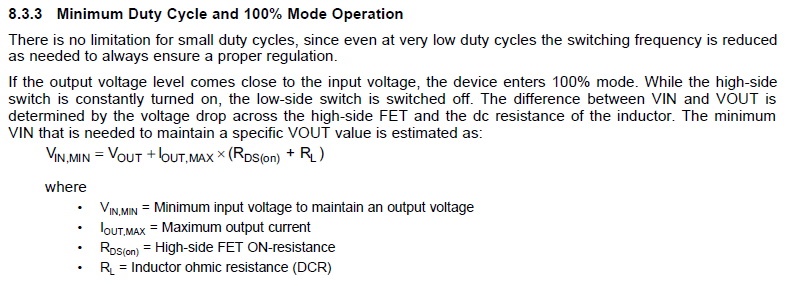I am looking at your TPS62826 step-down converter and have a unique situation. In most instances I need to step down the voltage of the input voltage, but there may be a configuration where I want to force the SW output to equal that of the Vin input. Regardless of the whether the output voltage is stepped down or not, I need the output voltage to be switched (i.e. use the EN signal) which is why I would the device in rather than bypassing it with a jumper or zero ohm resistor.
Since the TPS6282x series is capable of 100% duty cycle according to the datasheet, I was hoping to force the TPS62826 to act as a simple FET switch in this instance. Would this be possible if R1 in Figure 6 of the datasheet is simply omitted? Assuming the TPS62826 can be forced to act as just a switch (100% duty cycle), can the L1 inductor be changed to a zero ohm resistor to reduce the DC losses when operating in this manner?
-
Ask a related question
What is a related question?A related question is a question created from another question. When the related question is created, it will be automatically linked to the original question.


